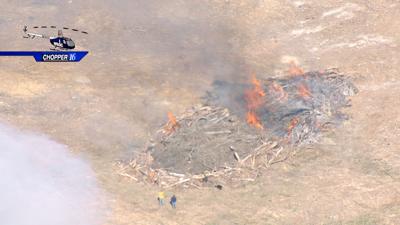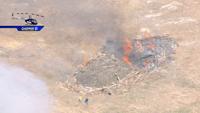SALISBURY, Md. - Along the drive into Pemberton Historical Park in Wicomico County, trees are being strangled - literally.
Responsible for this suffocation is Chinese and Japanese wisteria, an invasive plant species.
The creeping vine is prized among landscapers for its decorative pink or purple flowers, which is part of the reason the vine is in North America.
But after two centuries on Delmarva, the wisteria's beauty has turned into a beast.
"You can think of wisteria - honestly it has kind of a monster-like tendency," said Professor Kim Quillin, an expert on invasive species at Salisbury University. "You can't underestimate it's ability to propagate."
According to Quillen, invasive plants like wisteria can spread rapidly because they don't have to face their natural predators like they would in their native Asia.
Wisteria vines have overtaken much of the ground at Pemberton Historical Park, where efforts to remove the wisteria began with cutting and herbicides.
But it takes much more than that to eliminate wisteria.
"It has a remarkable property, which is when you cut off a piece, it can regrow from that piece," said Quillin.
Wisteria vines that are cut can quickly sprout new roots if it comes into contact with the ground. And the vines also produce a carpet-like network of roots that can also sprout new vines if not completely destroyed.
In such a situation, the Maryland Forest Service was brought in to kill the remaining undead wisteria with fire.
Dead trees and wisteria vine were gathered up and rangers with MFS burned two piles of the forest remnants - called slash piles - which sent up a whitish plume of smoke over southwest Salisbury Wednesday morning.
"Fire is extremely important," said Will Dyer with the Maryland Forest Service. "It's an underutilized tool and we'd like to see more of it in the future. It does create some smoke but the benefits are tremendous."
Dyer went on to explain that in addition to killing any remaining wisteria, wildfire is actually a benefit to forests.
"It returns all these nutrients to the soil, it's keeping the large debris out of the landfill, saves a tremendous amount of trucking expense, fuel expense," Dyer said.
Long ago, wildfires would regularly rip through forests, usually triggered by lightning. These fires would thin out dense growth, and quickly clear out fuels that accumulated from dead leaves, shrubs, and brush.
While it may seem that fire may seem an extreme solution to an invasive plant, wisteria doesn't just kill trees. Wisteria seeds are poisonous to pets, which alarmed dog mom Lois Obelcz of Mardela Springs, Md., who has wisteria on her property.
"We're going to be vigilant about not letting it spread and maybe we'll think that we need to cut it down and be a little more aggressive [in managing it]," Obelcz said.
Prof. Quillin said the best way for individual property owners to help fight the proliferation of invasive plants like wisteria is to be sure to use only native species in landscaping. To learn about what plants are native to Delmarva, you can refer to this publication by the U.S. Fish and Wildlife Service. Your local nursery can also help you select native plants to feature in your landscape.



